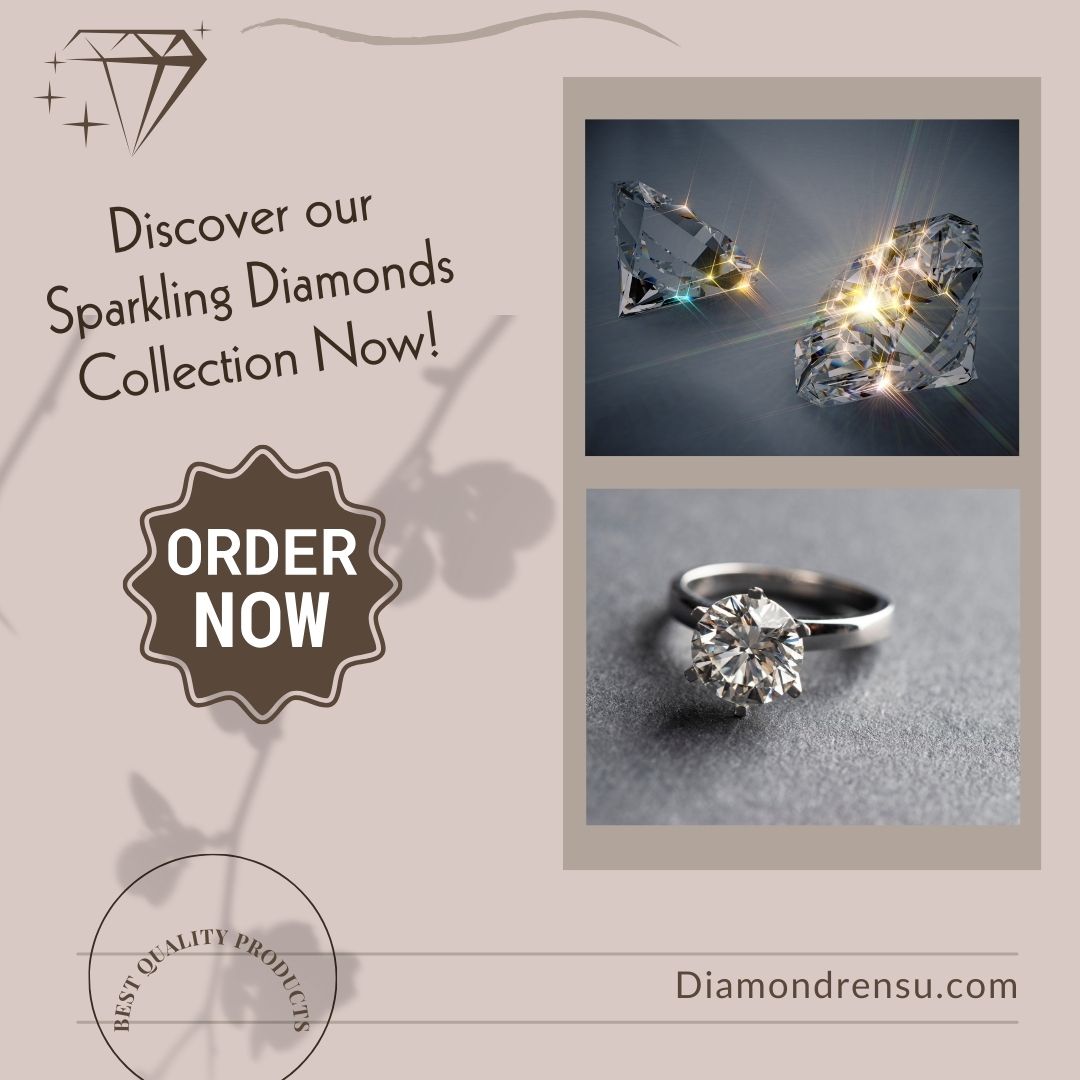When you're considering the purchase of a diamond, one of the most captivating attributes you likely look at is its sparkle. The sparkle of a diamond is a mesmerizing feature, and its intensity and brilliance are greatly influenced by the cut of the stone. The round brilliant cut is renowned for its superior ability to reflect light, earning its place as the most popular and sought-after shape when maximum sparkle is desired.
The cut of a diamond does not simply refer to its shape, but to the precision of its facets, symmetry, and proportions. Precision-cut diamonds, specifically those with a round brilliant cut, are crafted with 58 well-defined facets that are strategically positioned to maximize light reflection. This precise geometry enhances both brilliance—the white light reflections—and fire, which is the dispersion of light into the colors of the spectrum.
Your search for a diamond that offers an exceptional display of scintillating light should lead you to consider the cut quality closely. While a variety of cuts display remarkable sparkle, the round brilliant cut is especially effective in creating a dazzling display of light, living up to its reputation for brilliance and fire. The meticulous design and art of diamond cutting coalesce in rounds, ensuring that your diamond not only captures the light but dances with it.
Understanding Diamond Sparkle
To truly appreciate diamond sparkle, you must consider how diamonds interact with light and the structural elements that enhance this interaction. Let’s explore the science behind the sparkle.
Light and Its Interaction With Diamonds
When light strikes your diamond, a series of events unfold: reflection, refraction, and dispersion. Reflection occurs as light bounces off the surface, while refraction bends the light as it passes through the diamond. This bending causes the light to split into its spectral colors, a phenomenon known as dispersion or fire. The brilliance of a diamond, or its white light reflection, is a result of these combined effects. The cut of the diamond significantly impacts how these processes occur, affecting the overall sparkle you see.
Facets and Their Role in Sparkle
Each facet on your diamond can be thought of as a tiny mirror. The way these mirrors are angled and sized determines the quality of the light reflection and refraction, which contribute to the diamond's sparkle. A well-cut diamond will have facets that are precisely placed and shaped to maximize the diamond's ability to reflect light. Symmetry and polish are crucial; well-symmetrical facets allow for optimal light reflection, and a high polish ensures that each facet can reflect light effectively, without being dulled by surface imperfections.
The Science of Scintillation
Scintillation is the term for the flashes of light you see when the diamond, the light source, or the observer moves. It's essentially the dynamic aspect of sparkle. This effect is enhanced in a diamond with a high degree of light reflection from well-crafted facets. Lighting conditions also influence scintillation - direct light sources will create more vivid scintillation than diffuse light. When all aspects of a diamond's cut are executed with precision, the result is a dynamic interplay of light that gives the diamond life and character.
Diamond Cuts and Their Sparkle
| Diamond Cut | Description | Sparkle Intensity |
|---|---|---|
| Round Brilliant | Traditional and popular; 58 or 57 facets for optimal brilliance. | High |
| Princess | Square or rectangular shape with pointed corners. | High |
| Emerald | Rectangular with cut corners; emphasizes clarity over brilliance. | Moderate |
| Cushion | Square or rectangular with rounded corners; combines brilliance and a vintage look. | High |
| Asscher | Square with cut corners; a vintage cut with a similar look to the emerald cut. | Moderate |
| Radiant | Square or rectangular with cropped corners; a hybrid cut with brilliant and step-cut facets. | High |
When selecting a diamond, the cut significantly influences its sparkle. Understanding how different cuts affect brilliance can lead you to the perfect choice for that radiating gleam.
Round Brilliant Cut

The Round Brilliant Cut is the most popular diamond shape and is renowned for maximum sparkle. Perfected by Marcel Tolkowsky in 1919, this cut is specifically designed to enhance brilliance. A round brilliant diamond has 58 facets carefully arranged to optimize light reflection, leading to that sought-after sparkle. The precise geometry ensures that light entering the diamond is reflected multiple times before exiting, giving the round brilliant its exceptional fire and brightness.
Fancy Cuts Comparison
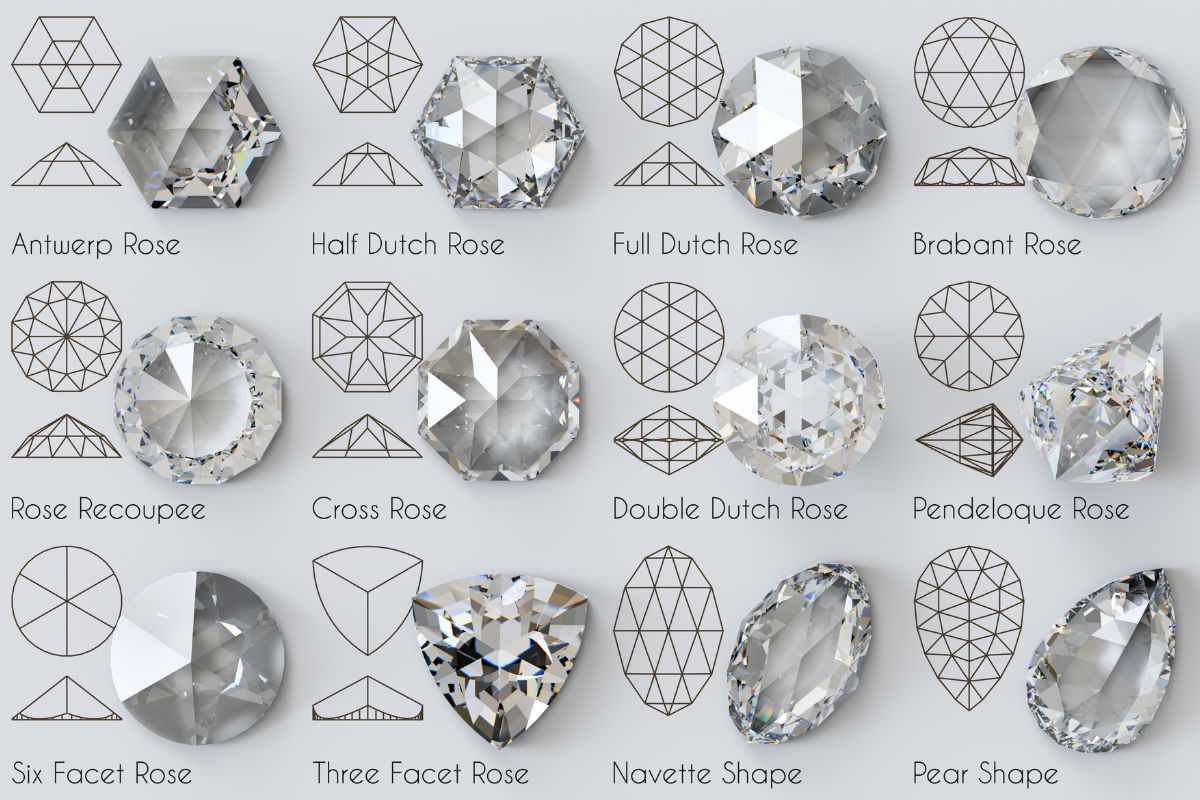
While the round brilliant cut is considered the benchmark for sparkle, fancy cuts like Princess, Cushion, Oval, and Marquise, are also admired for their unique flashes of light.
- Oval Cut: The oval cut offers a distinctive elongated shape that captures light well, resulting in a bright and lively appearance.
- Cushion Cut: Sporting rounded corners and larger facets, the cushion cut has a soft, romantic glow with less fiery sparkle.
- Marquise Cut: With its boat-like shape, the marquise cut produces a slender, elegant look and a brilliance that elongates the finger.
- Princess Cut: The princess cut is a favorite for its modern lines and intense sparkle comparable to the round brilliant, at times even surpassing it with its array of intricate facets.
| Diamond Cut | Description | Sparkle Characteristics |
|---|---|---|
| Round Brilliant | Traditional and popular; 58 or 57 facets for optimal brilliance. | Maximum sparkle with excellent light reflection and dispersion. |
| Princess | Square or rectangular shape with pointed corners. | Distinctive sparkle with a modern appearance; good light return. |
| Emerald | Rectangular with cut corners; emphasizes clarity over brilliance. | Step-cut facets create a hall-of-mirrors effect with subtle sparkle. |
| Cushion | Square or rectangular with rounded corners; combines brilliance and a vintage look. | Offers a balance of sparkle and a softer, romantic appearance. |
| Asscher | Square with cut corners; a vintage cut with a similar look to the emerald cut. | Step-cut facets create a mesmerizing sparkle pattern. |
| Radiant | Square or rectangular with cropped corners; a hybrid cut with brilliant and step-cut facets. | Combines the sparkle of round diamonds with the elegance of emerald and asscher cuts. |
Different shapes come with their own brilliance and character, but less symmetrical shapes such as the Pear, Heart, or Emerald cuts may exhibit unique reflections and less overall sparkle due to their cut nature. The radiant cut is a hybrid, taking cues from both the round brilliant and the emerald cut, providing an impressive sparkle. The Asscher cut is similar to the emerald cut but with a square shape, featuring a deep pavilion and high crown that emphasizes clarity over brilliance.
The Importance of Cut Quality
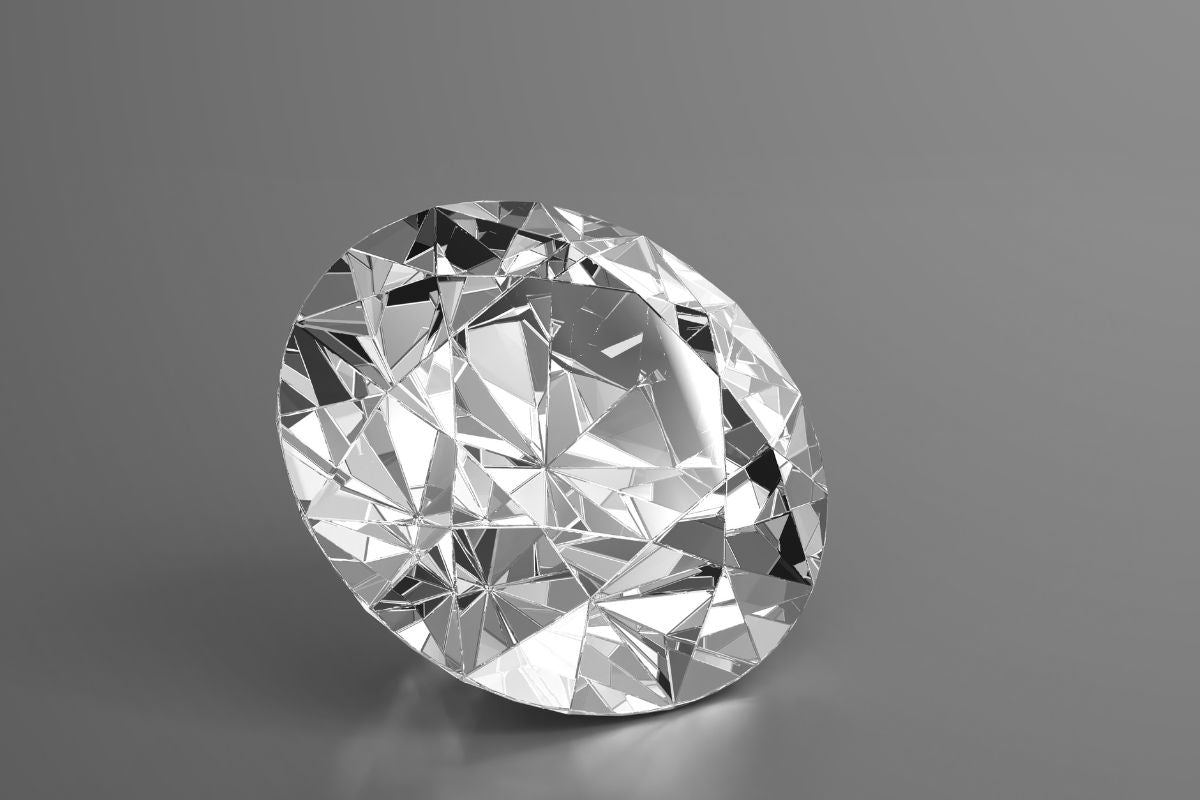
Cut quality is a crucial factor that affects a diamond's brilliance and its ability to sparkle. A well-cut diamond reflects light better, leading to more sparkle and a more appealing appearance.
Cut Grade and Sparkle
The cut grade of a diamond directly influences its sparkle, with higher grades reflecting more light. The GIA provides a comprehensive guide to understanding how cut quality determines a diamond's brilliance. When you select a diamond, pay close attention to the cut grade; it is as important as carat, color, and clarity.
Proportion and Symmetry
Proportions matter: the proportion of each diamond facet and how they align contributes to the stone's overall sparkle. Diamonds with precise proportions and high symmetrical quality reflect light more uniformly, enhancing the stone's diamond fire. When facets are well-aligned, light is reflected from one to another and then dispersed through the top of the diamond, which creates a dazzling effect.
The Role of Polish and Symmetry
A diamond's polish affects how cleanly light can pass through, while symmetry determines the balance and uniformity of the diamond's structure. Together, these factors play a significant role in the perceived quality of a diamond. Inconsistencies in polish or a lack of symmetry can diminish a diamond's fire and brilliance, so checking the number and precise placement of each cut is essential for a quality selection.
Factors Influencing Diamond Sparkle
When selecting a diamond, you need to understand how various aspects determine its sparkle. This includes the intrinsic qualities of color and clarity, but also how size, shape, and the chosen setting contribute to a diamond's brilliance.
Color and Clarity
The color of a diamond is graded on a scale from D (colorless) to Z (light yellow), with colorless diamonds reflecting light better, contributing to greater sparkle. Clarity refers to the absence of inclusions and blemishes. A higher clarity grade means fewer visual imperfections, allowing more light to pass through and enhancing the diamond's sparkle. Selecting a diamond with a "high clarity grade" is key to maximizing sparkle.
Size and Shape Impact
Size refers to the carat weight of a diamond, and though larger diamonds have a greater surface area to reflect light, the sparkle ultimately depends on the cut quality. Shape influences sparkle as well, with the classic round brilliant cut known for its superior fire and brilliance. A well-cut diamond with the right length to width ratio will exhibit more sparkle than a poorly cut stone of the same size.
Setting Styles and Materials
The setting of a diamond can enhance or detract from its sparkle. Prong settings allow more light to enter the diamond, increasing its sparkle, while bezel settings can protect the diamond but may reduce sparkle due to the metal rim around the stone. The material of the setting also matters; reflective materials like white gold and platinum can complement the diamond's brilliance.
Choosing the Right Diamond

When selecting a diamond, especially for an engagement ring, the cut is crucial as it determines the gem's brilliance and sparkle. Understanding how cut affects a diamond's visual appeal and its price will guide you towards a choice that balances your personal tastes with your budget.
Personal Preference and Diamond Selection
Your preference plays a significant role in selecting a diamond. Some cuts, like the round brilliant, are known for their exceptional sparkle and are often preferred for engagement rings. The round cut's numerous facets reflect light effectively, resulting in high levels of brilliance and fire. However, if uniqueness is more your style, alternative cuts such as the princess, cushion, or emerald cut may appeal to you, each offering a distinct look and type of sparkle.
Price Considerations
The price of a diamond is influenced by several factors, with cut quality being among the most significant. A well-cut diamond will better reflect light, exhibiting the sparkle that many desire in a diamond ring, but it can also command a higher price. As you evaluate diamond value, remember that opting for a premium cut may result in a smaller carat weight within the same budget. Conversely, prioritizing a larger size over cut quality could offer a more impactful appearance but potentially a less spirited sparkle.
Certification and Ethical Sourcing
When you're considering a diamond purchase, whether for its brilliance or sparkle, understanding the nuances of diamond certification and ethical sourcing can ensure that your choice aligns with both quality standards and moral principles.
Understanding Diamond Certification
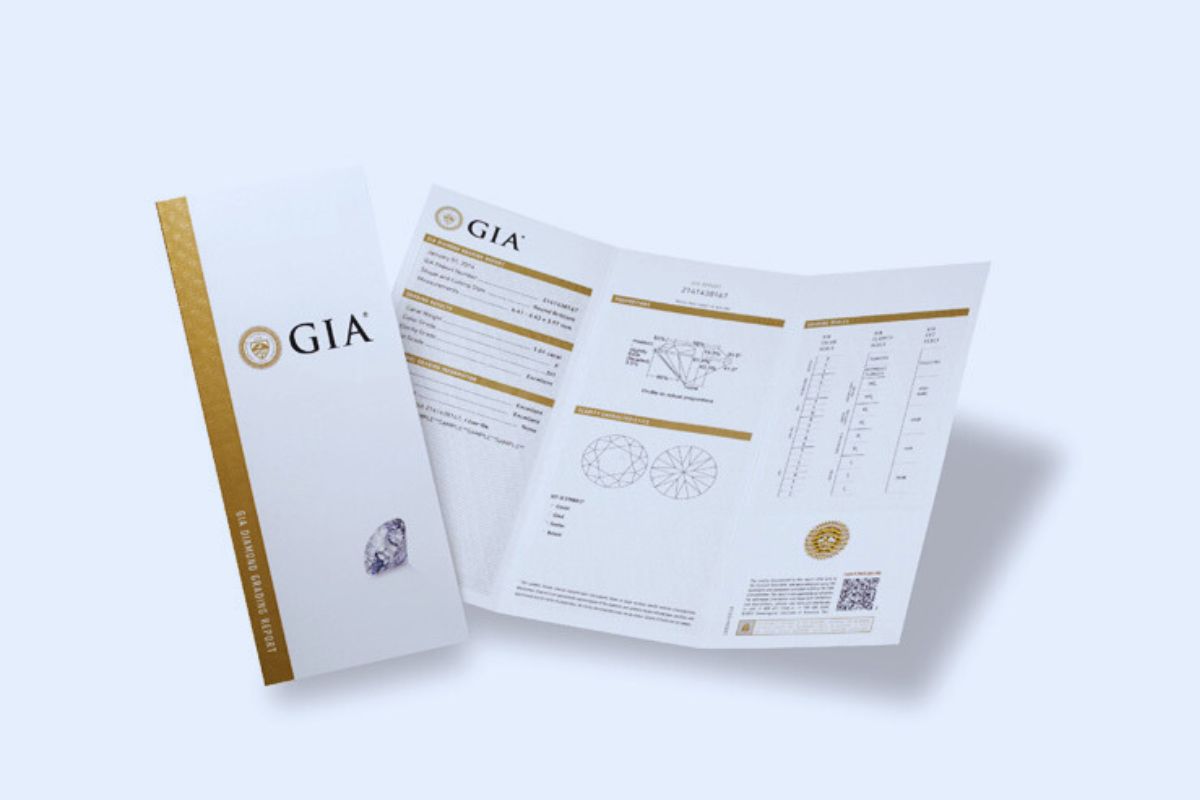
Diamond certification is a critical document that you'll encounter while purchasing gemstones. It assesses a diamond's characteristics, such as cut, color, clarity, and carat weight. The Gemological Institute of America (GIA) is one of the most reputable organizations in the world for diamond certification, providing a standardized report that can help you make an informed decision.
- GIA Certification
- Cut: Evaluates the diamond's angles and finish, which influence its sparkle.
- Color: Grades the diamond's color on a scale from D (colorless) to Z (light yellow or brown).
- Clarity: Notes any blemishes or inclusions and their impact on the diamond's appearance.
- Carat Weight: Measures the diamond’s weight, which can affect its size and value.
These certificates serve as proof of the diamond's attributes and can be beneficial in comparing different stones.
Natural vs. Lab-Grown Diamonds
When it comes to the topic of ethical sourcing, comparing natural and lab-grown diamonds is essential. Natural diamonds are mined from the earth, and their procurement can have environmental and ethical implications. On the other hand, lab-grown diamonds are created in controlled conditions, which can minimize their environmental footprint.
- Mined Diamonds: Sourced from underground or open-pit mines; associated with concerns over ecological disruption and ethical issues such as labor practices.
- Lab Diamonds: Cultivated in laboratories using advanced technology; present a more environmentally friendly and conflict-free alternative.
It's necessary for you to reflect on both the environmental and social impacts of your diamond choice, in addition to its dazzling appearance.
Historical and Cultural Insights
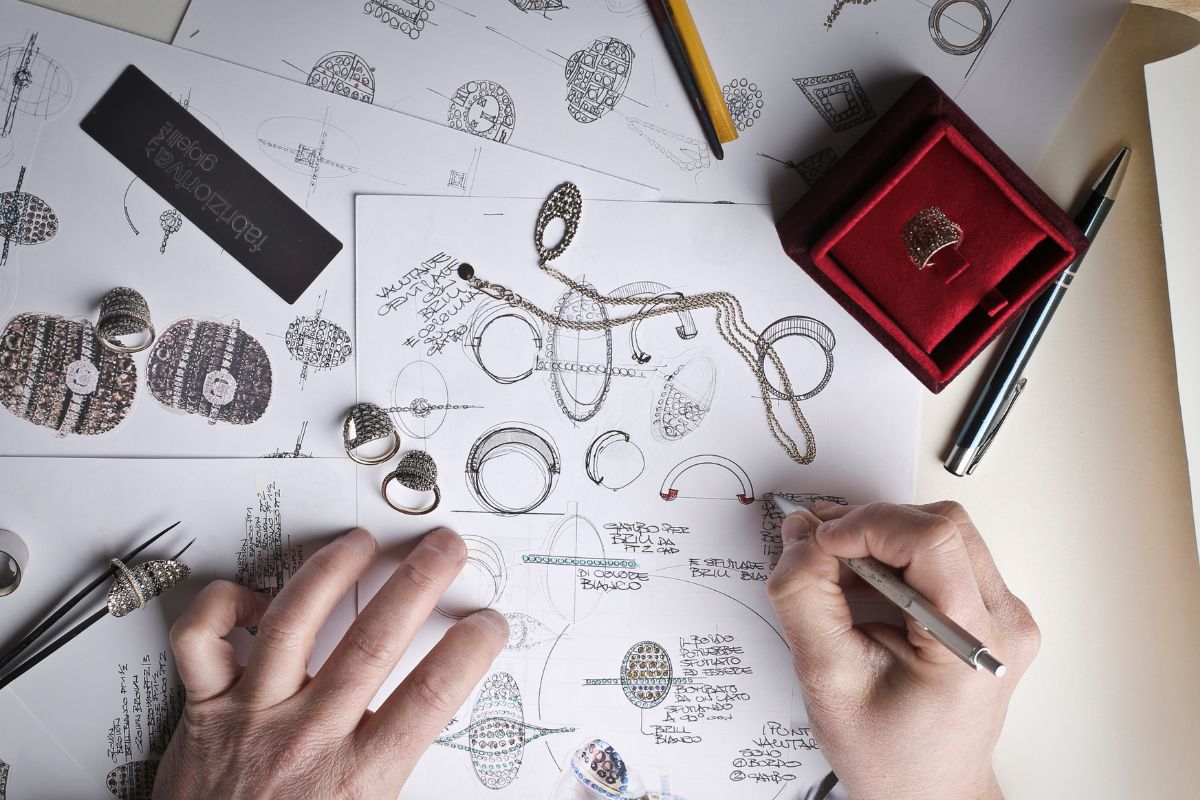
When considering which diamond cut sparkles the most, it's vital to understand the milestones of its craftsmanship and the cultural significance of its use in jewelry. The journey from uncut stone to a radiating masterpiece has a rich narrative intertwined with historical evolution and celebrated ring designers like Tacori, Verragio, and Simon G.
The Evolution of Diamond Cutting
The art of diamond cutting has come a long way since its rudimentary beginnings. Initially, diamonds were valued for their hardness and natural octahedral shape, but over time, techniques improved. The pivotal point in diamond cutting came in 1919 when Marcel Tolkowsky invented the "Ideal Cut." This cut was engineered to maximize a diamond's brilliance, and it has informed and inspired subsequent diamond cuts. Through deep understanding and meticulous craftsmanship, each cut aims to enhance the diamond's natural radiance.
Diamonds in Jewelry Design
Diamonds have long been the centerpiece in jewelry design, symbolizing both luxury and elegance. The presence of a brilliantly cut diamond on your finger is a tribute to centuries of design innovation. Brands like Tacori, Verragio, and Simon G have each honed a unique aesthetic that respects the history of the craft while pushing the boundaries of design. Robert M. Shipley, the founder of the Gemological Institute of America, also heavily influenced the way diamonds are graded, enhancing their value and appeal in design. Their intricate works showcase the diamond's sparkle, ensuring that its innate beauty captivates and endures.
Final Considerations

When selecting a diamond, your priority may be the stone's ability to sparkle. Sparkle, also known as scintillation, is a combination of fire and brilliance. Fire refers to the spectral colors you see as the diamond moves, while brilliance is the white light reflected back to your eyes.
The round brilliant cut is renowned for its unmatched sparkle and is considered the benchmark for comparison. It has been perfected over the years with precise mathematics to maximize light performance. The round cut optimizes the reflection of light, providing an excellent balance of brilliance and fire.
On the other hand, princess cut diamonds offer a modern and stylish alternative with strong fire and brilliance. Though they may not outshine round diamonds in sparkle, they still are a popular choice with their unique squared shape and sharp angles.
Remember, the sparkle of a diamond also depends on the 4Cs (Carat, Cut, Clarity, and Color). A well-cut diamond, regardless of its shape, will display more sparkle. Prioritize a higher cut grade when sparkle is your main concern, as cutting style and quality dictate a stone's reflective qualities.Keep in mind, diamond selection is subjective, and your preference for fire, brilliance, or a balance of both will guide your choice. The intricate balance between the angle of each facet, overall symmetry, and quality of cut culminates in a diamond's sparkle, making it essential to view diamonds in person to determine which cut captivates you most.
Frequently Asked Questions
When selecting a diamond, knowing which cut offers the most sparkle can greatly influence your decision. These FAQS will give you a deeper understanding of how cut affects sparkle, and guide you in choosing a diamond that meets your preferences for brilliance and size.
What factors contribute to the maximum sparkle in a diamond?
The maximum sparkle in a diamond, also known as brilliance, is greatly influenced by the cut's precision, symmetry, and proportion. These factors ensure that light entering the diamond is reflected internally and directed back through the top, creating a dynamic sparkle.
How does the round brilliant cut enhance a diamond's brilliance compared to other cuts?
The round brilliant cut diamond has been engineered with specific angles and a high number of facets to optimize light performance. It is renowned for its ability to balance brightness, fire, and scintillation, surpassing other cuts in terms of sparkle.
Which diamond cut is renowned for appearing the largest on the finger?
The marquise cut is renowned for its elongated shape, which tends to cover more surface area of the finger compared to other cuts of equivalent carat weight. This results in an appearance of a larger diamond.
Can the number of facets directly relate to the amount a diamond sparkles?
While the number of facets can have an impact, it's the precision of each facet's cut and alignment that is paramount in creating maximum sparkle. The properly cut facets work collectively to reflect and refract light, leading to the desired sparkle.
What are some popular diamond cuts known for their lack of sparkle?
Diamond cuts like the emerald and asscher are designed with fewer facets and larger "step" patterns. These shapes emphasize clarity and the diamond's inherent beauty but typically sparkle less than round brilliant and other more faceted cuts.
What attributes make a diamond cut the most sought-after by consumers?
A diamond cut that displays a harmonious balance of brilliance, fire (the dispersion of light into colors), and scintillation (the sparkle seen when the diamond moves) is the most sought after. The round brilliant cut, for its unmatched sparkle and versatility, often tops the list for consumers.
Checkout some of our top collections:

